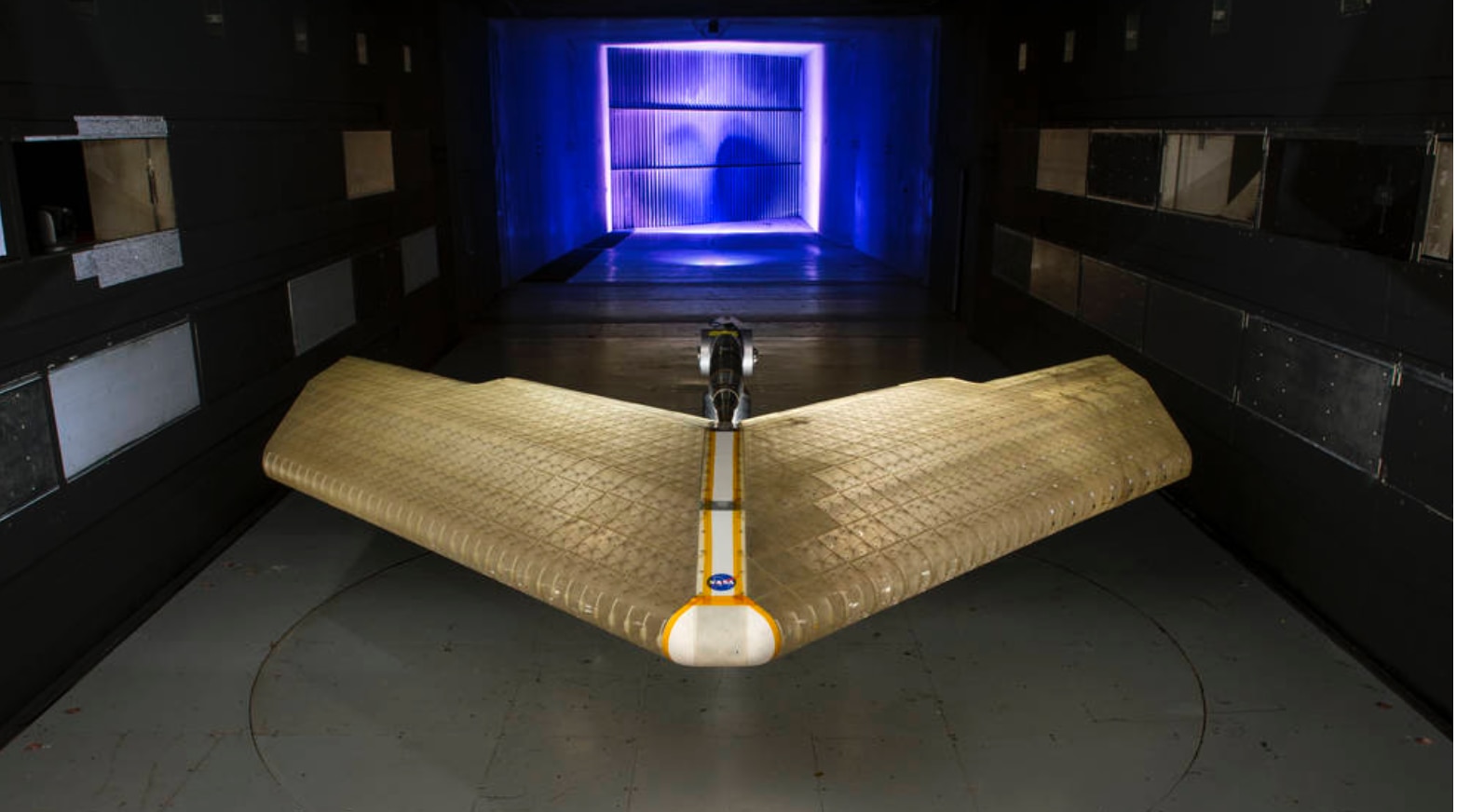Create a free profile to get unlimited access to exclusive videos, sweepstakes, and more!
Bye, Transformers: NASA's new airplane wing can morph into almost anything

Optimus Prime has nothing on this.
NASA’s Mission Adaptive Digital Composite Aerostructure Technologies (MADCAT) team has created an airplane wing that is the type of thing that previously only existed in the sci-fi world of shapeshifting robots. Able to automatically morph in flight depending on the aerodynamic loading conditions it faces, it just passed its first wind tunnel test. This could revolutionize the entire aerospace industry.
“We’re able to gain efficiency by matching the shape to the loads at different angles of attack,” NASA Ames research engineer Nicholas Cramer — the lead for a study recently published in the journal Smart Materials and Structures — told MIT News. “We’re able to produce the exact same behavior you would do actively, but we did it passively.”
The plane you might be taking on your next vacation doesn’t necessarily have the most efficient structure. Conventional wings are not optimized to respond to whatever they face. Such an aircraft relies on ailerons and other separate moving parts to stay balanced, even when it runs into some unexpected turbulence, but these components can’t change to fully suit those conditions. NASA’s dynamic wing structure can automatically reassemble itself depending on what it’s flying into, all those thousands of feet in the air.
You could make conventional wings more flexible by using motors and cables that could make them change form, but why bother with something manually controlled when this wing adjusts to anything automatically?
Lighter and more energy-efficient, this futuristic wing is assembled from thousands of tiny polymer struts bolted together into triangular structures that make up a lattice framework. Struts of varying flexibility and stiffness are carefully positioned for the wing to respond to particular stressors by bending in certain ways. These are then covered in a thin polymer layer. The stiff and flexible materials incorporated make it possible for the wing to deform and reform itself in flight.
Doesn’t that sort of remind you of those LEGO Transformers you had to assemble with plastic bricks before the shapeshifting action could happen?
Such an “aeroelastic structure,” as described in the study, finds its strength in the empty space that it uses, which allows it to merge the stiffness of polymer with low density and extreme lightness similar to an aerogel (an extremely low-density solid that results from taking the liquid out of a gel). Even better, production for NASA’s new wing is relatively cheap and could be used in other applications. Think space.
While this wing is comparable in size to one on a single-seater plane, watch the skies for something you only ever thought you’d see on an ‘80s TV show.


























